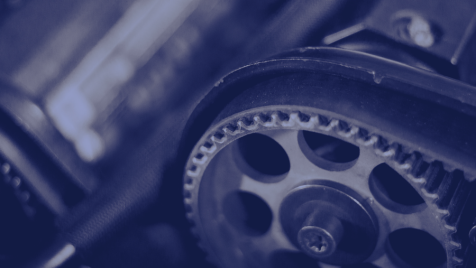Here at Engines Plus, we understand the importance of maintaining your engine to ensure optimal performance and longevity. One crucial aspect is checking and adjusting the condition of engine belts. In this blog, we’ll walk you through the process of inspecting your engine belts for wear and making necessary adjustments to keep your engine running smoothly.

Why Check Engine Belts?
Engine belts play a critical role in powering various components of your engine, such as the alternator, water pump, and air conditioning compressor. Over time, belts can wear down due to constant use and exposure to heat and friction. Checking engine belts regularly helps prevent unexpected failures and ensures the proper functioning of essential engine components.
Inspecting Engine Belts:
Before starting any maintenance, it’s essential to ensure the engine is turned off and cool to avoid any injuries. Here’s how to inspect your engine belts:
- Visual Inspection: Begin by visually inspecting the engine belts for any signs of wear or damage. Look for cracks, fraying, or splits along the length of the belt. If you notice any of these signs, it’s a clear indication that the belt needs replacement.
- Tension Adjustment: Proper belt tension is crucial for efficient operation. To check this, locate the tensioner arm or slider, usually positioned near the belt. Loosen the nut on the slider and adjust the tension using the bolt located at the end of the arm. The belt should have just enough tension to allow it to turn 90 degrees when pressed firmly at its midpoint.
- Belt Alignment: In addition to tension, it’s essential to ensure the belt is properly aligned with the pulleys. Misalignment can cause premature wear and belt failure. Use a straight edge to check if the belt runs parallel to the pulleys. If not, make necessary adjustments to align it correctly.
- Reassembly: Once you’ve inspected the belts and made any necessary adjustments, reassemble any components that were removed during the process. Ensure all nuts and bolts are tightened securely to prevent any issues while the engine is running.
Completing Maintenance:
Once you’ve inspected and adjusted the engine belts, it’s time to reassemble any components that were removed during the process. Ensure all nuts and bolts are securely tightened to prevent any issues during engine operation.
Regular maintenance of engine belts is essential for prolonging the life of your engine and avoiding costly repairs. By following these simple steps, you can keep your engine running smoothly for miles to come.
For expert advice or assistance with engine maintenance, don’t hesitate to reach out to our knowledgeable team at Engines Plus. We’re here to help you keep your engine in top condition and ensure your driving experience remains enjoyable and worry-free. Trust Engines Plus for all your engine maintenance needs.
